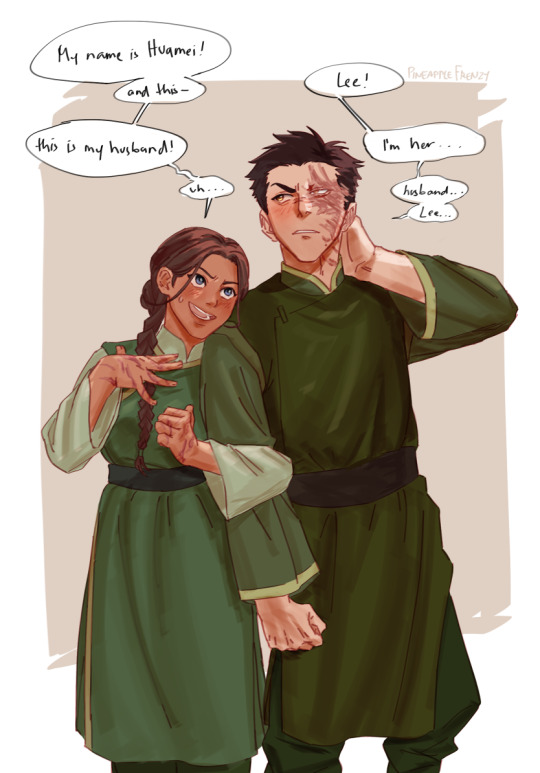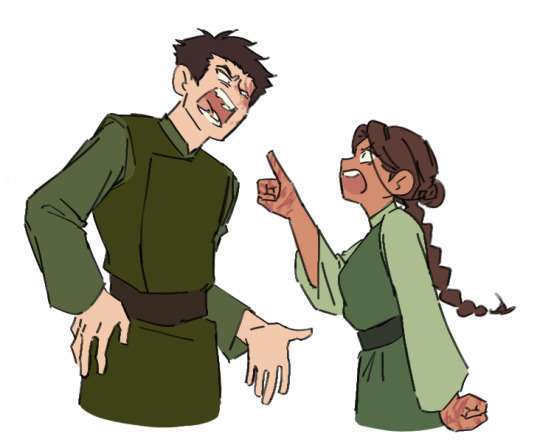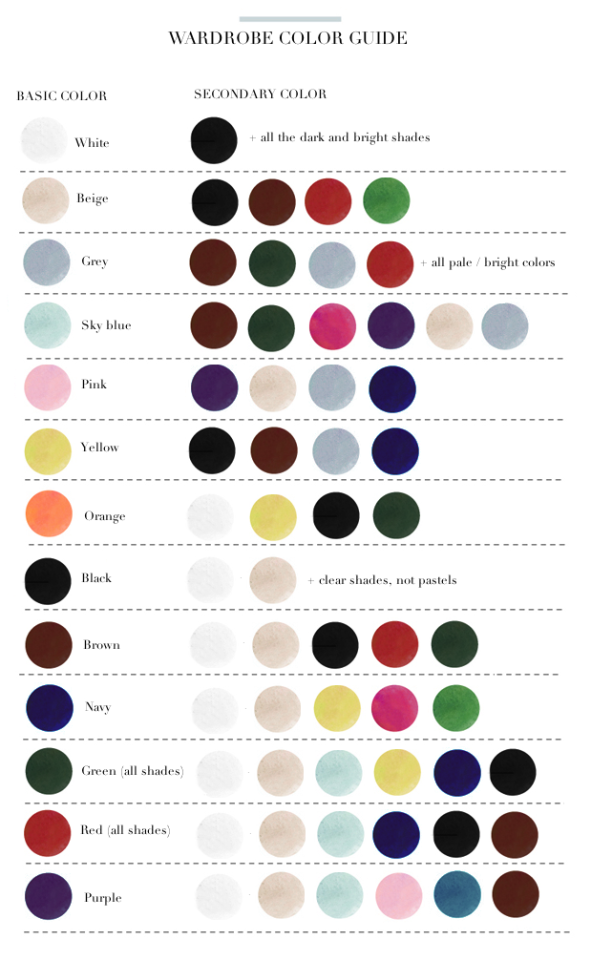Text






Book 2 au with Zuko and Katara Lee and Huamei
Katara is separated from her friends, and so she's left to travel the earth kingdom on her own. She stumbles across Zuko, who is similarly travelling on his own. They decide that pairing up and travelling together would be best
10K notes
·
View notes
Text
in fics where luke gets plopped into the prequels i want every jedi within ten metres of him to think hes the weirdest jedi theyve ever seen. he has negative lightsaber form. he doesnt know what a kata is. he handstands when he meditates. his solution to sith is to try and have a chat. hes a political radical who keeps suggesting revolution. you ask him what the jedi code is and he says "kindness and compassion and helping those in need :) ". you ask how he used the force like that and he says some shit about how you are a luminous being limited only by your mind. the councils authority is just a suggestion. he is somehow the new favourite of both qui gon and yoda
33K notes
·
View notes
Text
NO ONE knows how to use thou/thee/thy/thine and i need to see that change if ur going to keep making “talking like a medieval peasant” jokes. /lh
They play the same roles as I/me/my/mine. In modern english, we use “you” for both the subject and the direct object/object of preposition/etc, so it’s difficult to compare “thou” to “you”.
So the trick is this: if you are trying to turn something Olde, first turn every “you” into first-person and then replace it like so:
“I” → “thou”
“Me” → “thee”
“My” → “thy”
“Mine” → “thine”
Let’s suppose we had the sentences “You have a cow. He gave it to you. It is your cow. The cow is yours”.
We could first imagine it in the first person-
“I have a cow. He gave it to me. It is my cow. The cow is mine”.
And then replace it-
“Thou hast a cow. He gave it to thee. It is thy cow. The cow is thine.”
56K notes
·
View notes
Text
One of my personal nitpicks for historical fantasy is a lack of servants, staff, subordinates, and... idk... subjects? Like, their absence is not... a total dealbreaker for me, depending on the situations the characters are in and whether or not I can just assume that other people are there in the background... but so many of the protagonists in historical fantasy stuff are higher-ranking (very often royalty), and/or have busy jobs, and/or have enormous houses that would necessitate having at least part-time staff.
Like, girl, you should have a maid! WHERE is your chaperone?! WHO is driving this carriage?! Where are your footmen? Are you trying to imply that a WEALTHY DUCHESS is taking a CAB?! You know that you probably have tenants, right? Where is your steward?! Where is your lawyer? Your accountant?! (Like, yeah, you're not going to have your lawyer living in your house, but you HAVE one, right???)
Or, man, you're supposed to be a military commander and you don't even have a single secretary?! Where is your SQUIRE?! (In the spirit of historical fiction, I am jumping wildly across time periods with every sentence here.) Man, I know you aren't looking after your own boots. Where are your GUARDS?! Who set up this tent for you?! Who is looking after your horse?! Who is making and carrying the incredibly valuable maps people are recklessly stabbing daggers into?!
SOMEONE has to be scrubbing these floors and delivering the mail and cooking the meals, and they're probably all DIFFERENT people! My dentist has at least three different receptionists and we can't even get ONE for our court wizard here? A sorcerer's apprentice to take notes? Sherlock Holmes can get away with just having a housekeeper and taking taxis, sure, but your character is supposed to be a KING?! Why is he answering his own front door? He's going to get assassinated.
Like, yes, I understand that a lot of servants in certain places at certain times were supposed to make their labor invisible, but there have always been servants who still had to interact directly with the masters of the house?! Yeah, there are potentially really messy ethics here, class divisions are bullshit, but I don't think ignoring the reality that humans have ALWAYS been doing work for other humans (even if it's just having a collective cooking pot for the group and the cook not necessarily being subservient to anyone) is better than just including some servants and employees? Because a complete absence of them, especially where logically for the worldbuilding there MUST be servants, often makes me think that your main characters just don't care enough to notice the "lower class" people or know their names.
Also, even Frodo Baggins had a gardener and Samwise Gamgee might be the best damn character in the story?! Sam saved the world?! Servants are PEOPLE. Servants are often the funniest and most interesting characters, tbh, with the most to say about a society and its workings, and also the joke of some romantic scene being carefully orchestrated by a stage crew of servants frantically diving into bushes to stay out of sight never gets old to me. Team work makes the dream work!
I don't want to gatekeep historical fiction, especially not historical fantasy, because the worlds don't necessarily have to conform to our own and may have magic and characters are often in very unique circumstances, but... sometimes I pick up a story and it's like... "Author, please tell me that you know there is a difference between a butler and a valet?!"
11K notes
·
View notes
Text
d&d disability mechanics
so im disabled, and i have a disabled d&d character. i didnt like not having an in-game mechanic to express my character’s disability in more than words, so i decided to make some and then ended up making others.
a lot of these were made while consulting someone who has the disability or from my own firsthand experience, but some aren’t. if you want to critique some of my choices, message me! i’ll be able to either edit the ruleset or explain my reasoning, and i want it to be the best it can be.
note: a lot of the save DCs are left vague in this so you and your DM can determine how difficult they are to meet.
this is under a cut because it’s really long and so i can update it. if you want to see something added, message me!
(#dungeons and dragons, #long post, #death cw, #limb trauma)
Читать дальше
16K notes
·
View notes
Text
209 notes
·
View notes
Text
Due to centuries of cultural exchange there are a lot of similarities between the hamster religion and that of the chipmunks, both now being functionally death cults. The root of where they differ is how the two religions view this holy death.
To hamsters, death is an art form, an ever-ascending pillar of the strange and the grotesque. Hamsters seek beauty and uniqueness in death, venerating the most outlandish of the dead as saints: Our Lady of the Plumbing, Saint Tim the Blended, and Saint Ms. Cupcake Who Got Into That Barrel of Degreaser, to name a few. Through death, they connect with their god, whose immense corpse formed the world after choking to death on a stray asteroid. Hamsters will spend weeks planning their deaths and awaiting an opportunity to swan dive off this mortal coil.
Chipmunks follow a warrior’s religion. While hamsters embraced humanity as creators of new and exciting shapes and poisons, chipmunks never forsook their wild ways. Chipmunk culture idealizes the divine struggle: to face insurmountable odds and to die with honor. Only by throwing themselves under the wheels of a moving vehicle can they earn their reincarnation and escape the cruel jaws of the fox-god who awaits them in the underworld. Every chipmunk goes to their death secure in the knowledge that they have faced their fate a million times before and that they will face it a million times again.
Squirrel religion does not speak of death.
14K notes
·
View notes
Text
I don't think there will ever be a Worm fanfic better than Loaf. My god, it is just the perfect story, perfect continuation of what Worm set up, and perfect peek into a woman named Contessa. Incredibly well written and witty; it's the funniest story about depression you could ask for.
I've seen a lot of people over the years think they've reinvented a character because they tack some fanon on to them, but Maroon_Sweater invented Cauldron. The mannerisms, the byplay, their discussions, and thoughts on each other are all so perfectly in character. It really fleshs out everything we see about Cauldron and how they view themselves and their mission.
I really do think it is the perfect continuation (right up there with Forward written by my beautiful girlfriend). It brings in so many characters from Worm in ways that feel natural, fills in gaps or shows things that wouldn't fit into the original story, and lets us see where all those characters carry on from when we last saw them. I think that's what makes it work for me. Thematically, the story of Contessa mixes so well with the world. After everything has finished, after it's all over, what's next?
123 notes
·
View notes
Text
"The Swedish language contains many words specific to the practice of folk magic, for which there are no precise English equivalents. These terms can be literally rendered into conventional English, but a great deal of the cultural basis of the tradition is lost by doing so. Just as African American hoodoo practitioners speak in their own culturally-mediated dialect when they use words like fixed, dressed, goofered, jinxed, and tricked, so do Swedish trolldom practitioners have a culture-specific context for words like förgjord, tyda, gnidträd, tomte, and makt. Because literal translations do not convey these magical meanings, Swedish words are retained throughout this book, resulting in an intentionally "Swede-lish" text similar to the spoken English of old-time Swedish-Americans.
• Älvaeld (elf-fire): Skin diseases and rashes said to be caused by älvor burning a person. See also Älvablåst.
• Älvablåst (wind from the elves): Skin rashes and diseases said to be caused by älvor blowing on a person. See also Älvaeld.
• Älvakvarn, älvkvarnar (elven quern, elven mills): Huge blocks of stone into which small pits have been carved. These have been in use as sacrificial spots from the Stone Age up until modern days. The most common sacrifice is a doll. The small pits are usually anointed with butter before anything is placed in them. In Sweden prior to the mid-1800s it was recorded that when times were hard and the crops failed people used to have sex on these stones and leave the semen in the pits as a sacrifice.
• Alver, alv, älvor (elf): A spiritual ancestor; also a species of small nature spirit almost identical to the fairies of the British Isles, if those were also considered to be ancestral spirits. Alver make their homes in ancient Scandinavian burial mounds. The smallest of them are amused by playing with young children and are reputed to suck their blood.
• Ångerstål (steel of regret): A murder weapon or a sharp metal tool that has accidentally broken. It is generally used to make magical tools but also occurs in spells for protection.
• Aning (hunches, suspicions): Vague feelings of spiritual distress, often associated with worry or nervousness. A tyda of the inner senses.
• Återställa (recovering, restoring): Bringing an item that has been förgjord (destroyed) back to normal. See also Bota.
• Besvärja (to speak about something): The recitation of troll formulas, also the process of conjuring spirits.
• Besvärjelseformen, maning (the incantation formula; exhortation, command, conjuration): An adjuration at the end of a troll formula.
• Bjära, bese (carrier spirit): A spirit in the form of a ball or a doll.
• Bot, bota (cure, healing or curing): The process of restoring something that has been förgjord (destroyed). See also Återställa.
• Brännvin (burnt wine): Clear, strong grain or potato vodka; it is used as a scrying medium in some forms of spådom.
• Cyprianus (Saint Cyprian book): See Svartkonstbok.
• Djävulen (the Devil): Other names for him are Den Onde, Fan, Pocker, Skam, Hin Håle, Gamle Erik, and Hornpelle.
• Döva (to deafen, to make still): A method used to render weapons harmless, to quell love, to make something numb and still.
• Drömsyner (dream visions): Dreaming true does not only refer to sleeping visions; in trolldom, daydreams or vakendrömmar (waking dreams) are also considered to be tydor of the inner senses.
• Dyfvelsträck (devil's dung): Ferula asafoetida; devil's dung is a common English name given to this foul-smelling plant.
• Fassna (stuck): A condition in which something is magically fastened to a person; usually considered a harmful situation.
• Fegljus (death light): A very small light appearing close to a person who is about to die. A tyda of the inner senses.
• Femudd, femhörning (pentagram star drawn in one stroke): A sign of protection used to bind spirits; symbol of the Virgin Mary.
• Flygrönn (flying rowan): A rowan tree that has grown in another tree and never touched ground.
• Förgjord (un-made, destroyed): Unable to function; bewitched; rendered useless due to curses, hostile trolldom, the evil eye, or spiritual attack. Restoration is via Återställa or Bota. See also Skämma.
• Förtrollad (enchanted, en-trolled): Often used as a synonym to Förgjord (destroyed), it can also mean enchanted in general.
• Fylgia (monitors): Personal guardian spirits. See also Vard.
• Gand (airborne spell): A spell cast into air and sent a great distance.
• Gast (ghost): A visible spirit of the dead; it may occur as a prefix in the names of negative conditions like gastkramad (squeezed by a ghost).
• Gnideld (rubbing fire): See Vrideld.
• Gnidträd (rubbing tree): A tree with two branches or trunks that rub against one another. Such a tree makes a squeaking sound when the wind blows, and is therefore also known as a knarrträd (creaking tree).
• Göra före (to do before): To place something in another's future.
• Hambel, hamn (one's appearance): This refers to the physical appearance as a shroud around the spirit or vålne.
• Hård (hard): The result of a spell to make oneself invulnerable.
• Håg (hag): In English, a hag is a witch who rides people or animals at night, but in trolldom, the håg of a person consists of their desire and mind. To change someone's mind is called hågvända (turning the håg).
• Hågvända (turning the håg): See Håg.
• Ingivelse (spirit-sent impulse): An impulse to act that has been sent by a person's vard or fylgia (guardian spirits) or by other benevolent spirits. As tydor of the inner senses, ingivelser can occur suddenly, without conscious thought or action.
• Jätta (threaten) - Jätta för ont (threaten for evil): To threaten with a curse, which is regarded as a method of cursing a person in itself.
• Jordfast sten (earthbound rock): A rock too large to lift from the soil.
• Kasta ut (cast out): To remove evil by throwing it out, usually at a crossroads or cemetery. Other than speaking a troll formula, the work is silent, and it is not mentioned to others until one night's sleep has passed.
• Klok, kloke (clever): Wise and intelligent; in a magical context it also means well-versed in trolldom.
• Knarrträd, knarrtall, knarrgran (creaking tree, creaking pine, creaking fir): See Gnidträd.
• Kusad (quelled): This dialect term derives from a synonym for trolldom - kuschleri - and means quelled or quenched by trolldom.
• Likfassna (corpse stuck): A negative condition in which the spirit of a dead person is afflicting a living person. See also Likkrosa.
• Likkrosa (corpse crushed): The negative condition of being held down by a spirit of the dead. See also Likfassna.
• Lövjeri (leaf-craft): The use of herbs to cure and remove evil.
• Makt (power): Might, power, and force, in a magical sense.
• Maktstjäla (to steal power) - Maktstulen (robbed of power): The act of stealing another's magical power and the condition of one whose power has been stolen. See also Modstjäla.
• Maning (exhortation): See Besvärjelseformen.
• Mara (night-gaunt): A spirit who torments people at night or in their dreams. The same root appears as "mare" in the English word nightmare.
• Mäta, mätning (measure, measuring): A category of spells using measured strings and tied knots. Magical measuring can be traced back
• Modstjäla (to steal courage) - Modstulen (robbed of courage): Stealing one's courage is a sorcerous act. The term also describes one who suffers from depression or feels low in spirits. See also Maktstjäla.
• Motskott (countershot): A counter-remedy against trollskott.
• Näcken (Nix): A naked spiritual being who resides in streams, rivers, or lakes. He is a shape-shifter and he drowns people, but he also teaches magic and music. In Scandinavia there is only one Nix, who can appear in any body of water, but among the Germans and English, there are many nixes, and the females are called nixies.
• Namnlösa fingret (the nameless finger): The ring finger on the left hand; it is believed to have a direct link to the heart and therefore to a person's power, might, courage, and håg, which reside in the heart.
• Natur (nature): A person's sexuality and capability for procreation.
• Nedsätta (to reduce, to set down) - sätta ned (to put down): The magical destruction of a person's love life or chances to get married. The term may also refer to the destruction of other areas of a person's life.
• Nisse (brownie): See Tomte.
• Ofärdsspådom (oppressive divination): The act of predicting or foretelling harmful events in the future. See Spå.
• Offring (sacrifice, offering): To cure problems through sacrifice, to appease elves, or to offer a spirit something and get something in return.
• Rå, rådare (spiritual ruler): Spirits who act as caretakers and guardians. of a place. They are named after the locations where they reside, such as skogsrå (forest rå), sjörå (lake rå), havsrå (sea rå), bergrå (mountain rå) gruvrå (mining rå), skatters rå (treasure rå), vägrå (road rå), kyrkogårdsrå (cemetery rå), and kyrkrå (church rå). See also Tomte.
• Runa, runor, runkafle (rune, runes, a stick carved with runes): The letters of the Old Norse alphabet are called runes. The same word also refers to charms written in runes or other alphabetic or non-alphabetic characters. To rune can also mean to cast a spell. See also Trollformel.
• Sänningar (sendings): This refers to things by magic or cast upon someone from a distance.
• Sedel (ticket): A slip of paper used for written runes and talismans.
• Sejd, seiðr (sorcery): Used in the Nordic sagas to signify trolldom, this obsolete word has recently been revived by adherents of Asatru.
• Signeri (signs, symbols, marks): To read or speak troll formulas aloud or silently, or to sign or mark something with the cross. The latter may be done "in the name of the Father, Son, and Holy Ghost" or silently. See also Välsigna.
• Skämma (shame, taint), skämd (having been shamed): A magical method to render someone powerless and cursed. See also Förgjord.
• Skärsel (garden riddle, flour sifter): A divinatory method using a sieve, sifter, or riddle.
• Smörjning (anointing): The use of ointments to cure and remove evil.
• Solv (string heddle eyes of a loom): There is a very old belief that the world and all the events in it were created by weavers. Therefore, string healds or heddle eyes that are cut off the heddle frame of a loom are magically dangerous because they are outside the world of the weavers. It should be noted that to cut these from the loom can be regarded as a transgressive act.
• Söm (horseshoe nail): a square iron horseshoe nail.
• Sortebog (black arts book): See Svartkonstbok.
• Spå (to predict, to foretell), spådom (divination): The art of foretelling the future, also used as a general synonym for trolldom. The word spå survives in the Scottish term spaewife, meaning a fortune-telling woman. See also Ofärdsspådom and Tyda.
• Spiritus, spertus (spirit): A spirit, often kept in a box, bottle, or pouch.
• Ställa (to stall, to stand still): The method of making a thief or anyone else stand still and be unable to move from a location. It can also be used to stop game animals from moving, when hunting.
• Stämma (to staunch, to summon, to command): This word meansvto staunch, as in staunching blood, but also to summon people or animals to a place. In the old days, the stämning was announced in the powerful trinity of bedpost, threshold, and ting or court. When someone was stämd to the ting, the messenger first read the summons by the bedpost of the person being called, then a second time at his threshold, and finally at the ting.
• Skogsfru (female forest guardian spirit): Rådare means caretaker or guardian spirit. In the case of the forests, the guardians are usually described as female and may go by names such as the Skogsfru (Forest. Lady) or Skogsrå (Rå of the forest).
• Stöpa (steeping, melting, reshaping): The method of pouring melted lead, tin, wax, or a similar melted liquid into a container of water while holding the water over a person, to cure and remove evil. Stöpa is used for divinatory purposes as well, in which case the various forms and shapes made by the coagulated material are read as signs.
• Svartebog (black book): See Svartkonstbok.
• Svartkonstbok (black arts book): A grimoire or book of sorcery. Other names for this type of book are svartebog (black book), sortebog (black book in Danish), and Cyprianus (a book attributed to Saint Cyprian, the patron saint of occultists and necromancers).
• Svärdsbrev (sword-letter): A written talisman carried on the person for protection from harm. See also Trollbrev.
• Syn (vision), synsk (a visionary): A person who has the ability to see visions (syn) is said to be a synsk or visionary. The word synsk is synonymous with clairvoyant or second-sighted, but in casual conversation, the work synsk is often used to describe those with related abilities who would be known in English as clairsentient, clairaudient, claircognizant, or just plain psychic. An inherited ability, it is a tyda of the inner senses.
• Ting (legislative assembly, court): The word ting is used in this book to describe these assemblies as they were constituted in the old days in Sweden, before Christianity arrived, circa the 9th century. The tings were often held at crossroads or where three borders crossed.These meeting places were commonly the locations of old burial sites and grave mounds. The spirits of the ancestors took part in the procedures of the ting by determining the outcome of various ordeals set before two opponents in a court proceeding.
• Tomte, nisse, gårdsrå, bol-vatte (brownie, land-spirit, house-elf, house-wight): Tomte is the title for, or position given to, a spirit who takes care of a household. The tomte is responsible for the luck in the house and the work done around the home. Originally a spirit of the dead, in modern times the tomte has been popularized as a cute kind of nature spirit. Other names for this spirit are gårdsrå (rå of a farm), nisse (brownie), or bol-vätte (land-wight).
• Torvigg (the lightning bolt of Thor): This name refers to a flint axe of the kind that was made in the Stone Age and was used for cutting and hunting. In Swedish folklore it was said that these ancient axes appeared when lightning bolts from the Norse thunder god Thor struck the ground and that they were his weapons against evil. The torvigg is highly valued in trolldom. It is used to protect oneself from harm and from sorcery and to prevent one from being overpowered by other people or spirits.
• Tránsjuka (obsessive love-sickness): This condition renders one unable to let go of a lover, either due to mental obsession or because one has been förgjord (destroyed through sorcery).
• Troll (troll, goblin, ogre): A class of ancient magical spirits, their sorcery, and the magic performed with their aid. As a prefix, it may be roughly translated as "magical" but in this book the Swedish word is retained in terms like troll-bundle, troll-letter, and troll formula.
• Trolldom (trolldom): folk magic, the Scandinavian equivalent to the folk magic of other nations, such as sorcery, hexerei, braucherei, brujeria, stregoneria, hechicería, hoodoo, conjure, witchcraft, or rootwork.
• Trollaktig (troll-like): A person who behaves as if he or she is wise or knowledgeable in trolldom; a practitioner; someone who is trollkunnig.
• Trollbrev (troll-letter): The generic name for a written talisman for any purpose. A trollbrev may be rolled up and worn in a cylinder hanging around the neck, sewn into clothes so that the symbol is facing outwards, or carried in the inner pocket of a jacket. In modern times it may be worn in a woman's bra. Sewing a trollbrev not meant for curing into your clothes is pointless unless it is for a single occasion, since the paper disintegrates during laundering. See also Svärdsbrev and Värnebrev.
• Trollformel (troll formula): A spoken spell or incantation, either rhyming or in free verse. The wording of each troll formula is kept as a closely guarded secret that is transmitted only to those who inherit an elder practitioner's power and craft. Teaching a troll formula to a student has traditionally meant that the teacher loses the power to use the formula successfully. This is still true today, although, due to the publication of so many troll formulas in books during the past hundred years, contemporary teachers never need give away the specific incantations that they themselves use; instead they can teach their students alternative versions. This is not difficult, as there are more than 50,000 collected troll formulas in Swedish folklore archives alone, and many thousands more in the archives of Norway, Denmark, and the Swedish-speaking part of Finland. The word runa (rune), meaning a written spell, may be used as a synonym for trollformel.
• Trollhare (troll hare): A hare-spirit that is used to draw material goods to a specific place or to steal milk or butter. See also Trollkatt.
• Trollkatt (troll cat): A cat-spirit that is used to draw material goods to a specific place or to steal milk or butter. See also Trollhare.
• Trollknyte (troll bundle): A magical bundle wrapped in cloth and tied shut; knyte is cognate to the English word knotted. See also Trollpåse.
• Trollkunnig (troll-skilled): A person who is skilled in magic; one who is knowledgeable, well-versed, or cunning in trolldom.
• Trollpåse (troll pouch, troll bag): A small pouch made of cloth or chamois skin in which magical articles are contained. See also Trollknyte.
• Trollskott (troll shot): A magical shot to cause harm. It can be done by humans, various spirits, or even forces of nature.
• Tyda, tydor (omen, meanings): Magical indications, decipherments, readings, interpretations, or visions. The word is cognate to the English tidings, meaning messages. Tydor are messages from the world of spirit.
• Utesittning, utiseita (sitting outside): A vision-quest to awaken trolls.
• Våd-eld (accidental fire): A fire resulting from human carelessness.
• Vålne, vålnad (wraith): The spiritual part of a person that survives the death of the physical body.
• Välsigna (signs or marks for well-being): Blessings. See also Signeri.
• Vard (ward): Personal guardian spirit.
• Värnebrev (shielding letter, guardian letter): A written talisman used to protect the wearer from harm. See also Trollbrev.
• Varsel (warning spirits), varsla (forewarning): Tydor that predict evil or tell of evil at another location are called varsel. A dying person's vard or vålnad may carry the forewarning or a tomte may tell of it.
• Vättar (gnomes): An old word meaning spirits in general or spirits who reside in and are a part of nature and the elements.
• Vigt silver (dedicated silver): A piece of jewelry or a coin that has been worn at a wedding.
• Vite (penalty) - Vita (trolldom): Vite, a court-ordered punishment, gave rise to the words vita (a term describing trolldom as a way to magically mete out justice) and han vitar (he casts a justified curse).
• Vrideld (twisted fire): Fire-drilling with a twisting motion. A wooden pole is held horizontally against a vertical wooden surface such as a door, and twisted until the heat of friction produces fire. This fire is used to drive off evil spirits and to remove curses and the evil eye. Also called Gnideld.
• Wittenberg: A German town in which Scandinavian priests studied theology. It is associated with magic, the Jewish kabbalah, and folkloric legends connected to trolldom, magical words, and black arts books."
—
Trolldom:
Spells and Methods of the Norse Folk Magic Tradition
'GLOSSARY
by Johannes Gårdbäck
453 notes
·
View notes
Text
oh you're in a horror film/book and your phone died/has no bars? how boring. I think phones in horror SHOULD work. they should ding only to have the protagonist check and find nothing. they should get calls from somebody you don't know but is still somehow in your contacts. google maps should lead you to one place, no matter what address you type in.
phones are such a big part of our daily lives, removing them from horror removes the horror from our experience. what if the horror felt like it could happen to you, right here, right now? what if it felt like it was already happening?
79K notes
·
View notes
Photo

Old Raven and little Nightingale.
_________________________________
https://vk.com/mortalandothers - мой ВК
Почему-то я довольна тем, как здесь вышли мои птенчики - люблю такие тихие моменты в истории, паузы, в которые можно привести в порядок мысли, немного выдохнуть, поговорить, а может даже перебинтовать старые раны.
Возможно, вы замечали на других артах, что у Кощея перебинтована левая рука: тысячу лет назад он, заключая сделку с Тьмой, сделал ритуальный порез на ладони. И, несмотря на быструю и полную регенерацию других ран колдуна, именно эта никогда не затягивается.
Чтобы уменьшать боль и останавливать кровь, Бессмертный использует специальные заговоренные лоскуты ткани - обычно их не видно под перчаткой - и когда требуется сменить бинты, колдун делает это сам и подальше от посторонних глаз - не нужно никому видеть его слабость. Но в последнее время он стал замечать, что гораздо удобнее и сподручнее, когда ему кто-то в этом помогает. А еще так гораздо приятнее)
23 notes
·
View notes
Text
every time i see those posts like ‘what food from a show did YOU always wanna try’ i go lol none? but i just remembered im a liar

i always wanted the fucking soup brock made in the pokemon anime
108K notes
·
View notes

























